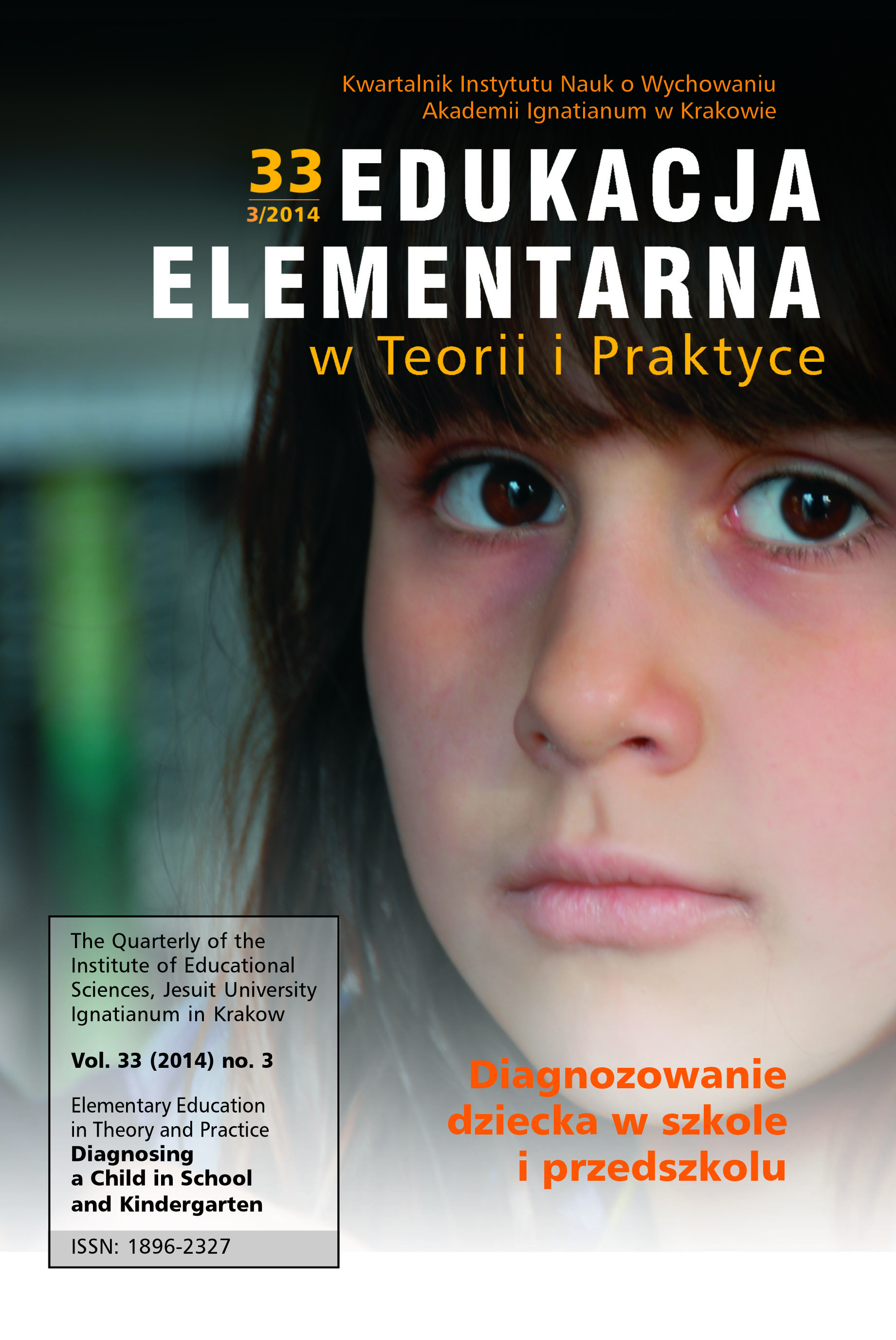Metody i techniki diagnozowania uczniów zdolnych na tle tworzonego przez nauczycieli środowiska sprzyjającego diagnozie
The Methods and Tools of Diagnostic Assessment of Gifted Learners, Considered in Relation to the Creation of an Environment Conducive to Diagnosis by Teachers
Author(s): Aneta Kamińska, Anna KowalczykSubject(s): Social Sciences, Education, Essay|Book Review |Scientific Life, Societal Essay
Published by: Uniwersytet Ignatianum w Krakowie
Keywords: diagnosis of gifted learners; gifted learner; methods of diagnosis of gifted learners; tools for the diagnosis of talented learners; quantitative methods; qualitative methods; observation; mentoring;
Summary/Abstract: Selecting the right methods for diagnosing gifted pupils is an important condition that has to be fulfilled if the schooling of these students is going to be successful. The role of teachers, pedagogues and psychologists is one that requires them to familiarize themselves with the many ways of assessing gifted pupils and apply them properly in relation to each student. They should take into consideration the latter’s individual needs, interests, age and other important factors. They should also not forget about their own preferences with regard to the methods and tools of diagnostic assessment, or their own level of knowledge of these and ability to make use of them. Modern teachers – especially truly capable pedagogues – possess a fairly wide range of methods for the diagnosis of gifted pupils, including both qualitative and quantitative approaches. The former may inter alia be helpful in the diagnosis of long-term social conditions, whereas the latter tend to be useful in, amongst other things, measuring IQ. However, some educators prefer qualitative methods as more finely tailored to the individual needs of gifted learners and thus better for assessing their predispositions accurately. Either way, such methods should be selected carefully, with due consideration to how they may be rendered useful in practice. The purpose of this article is to show the multiplicity of methods available for diagnosing gifted learners, along with their possible applications. It could also be seen as making a contribution to a process of ongoing self-reflection on the part of teachers themselves. The point is made that any such diagnosis should be carried out under conditions favorable for learners, as these will enable it to conducted more accurately and easily, which is to the general benefit of all those involved in the educational process.
Journal: Edukacja Elementarna w Teorii i Praktyce
- Issue Year: 9/2014
- Issue No: 3 (33)
- Page Range: 207-220
- Page Count: 14
- Language: Polish

